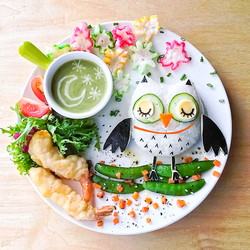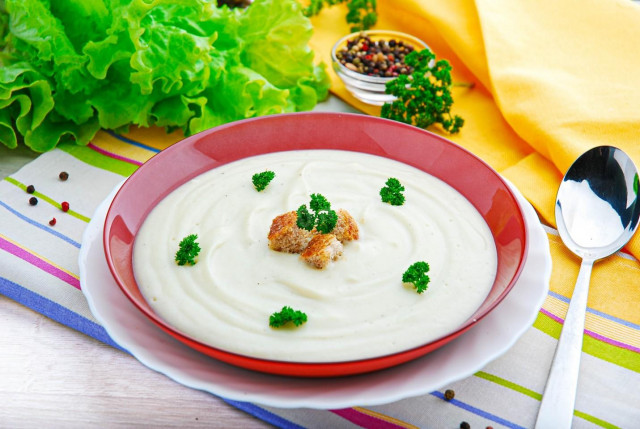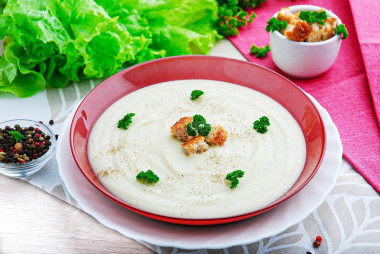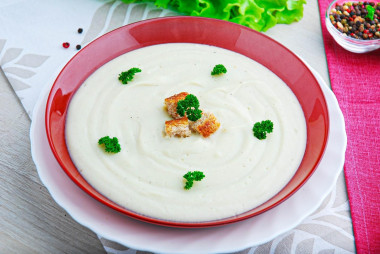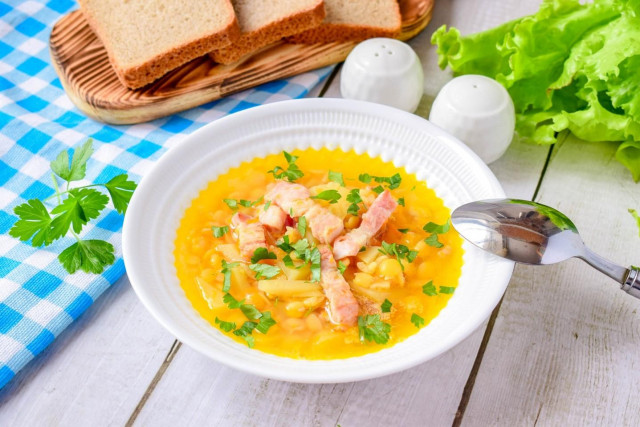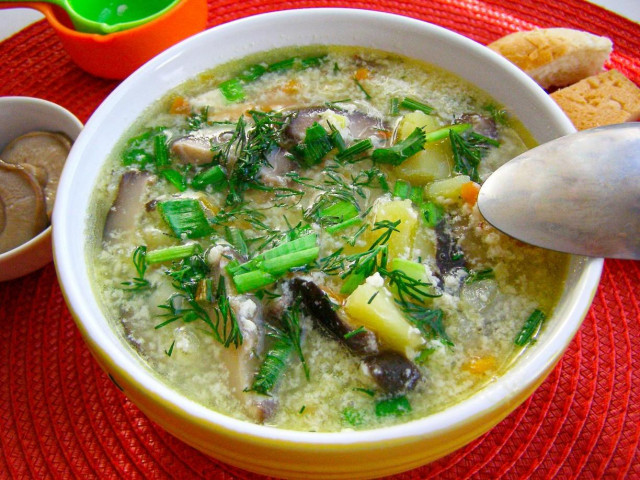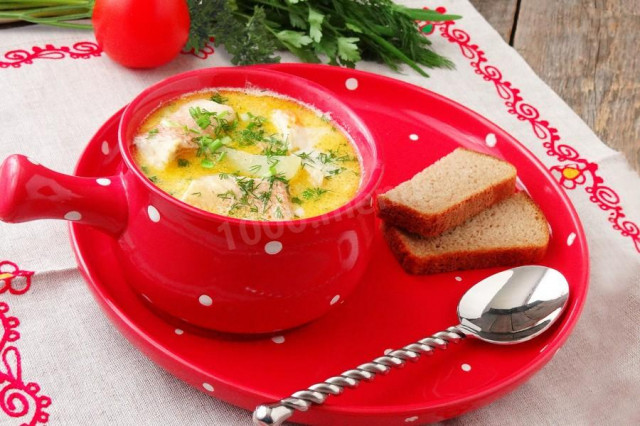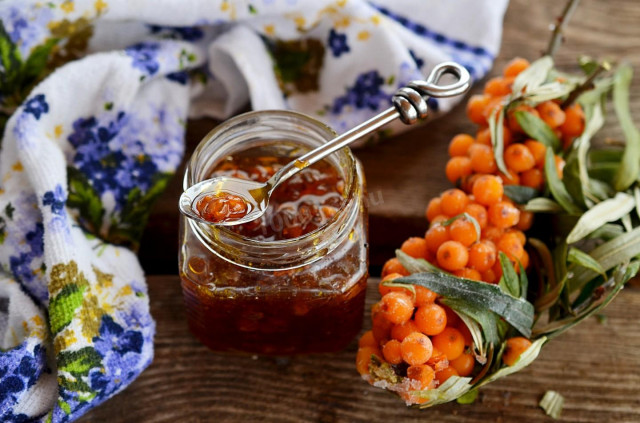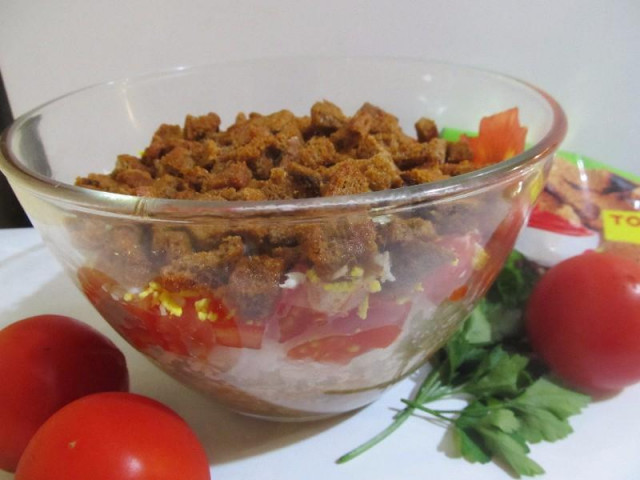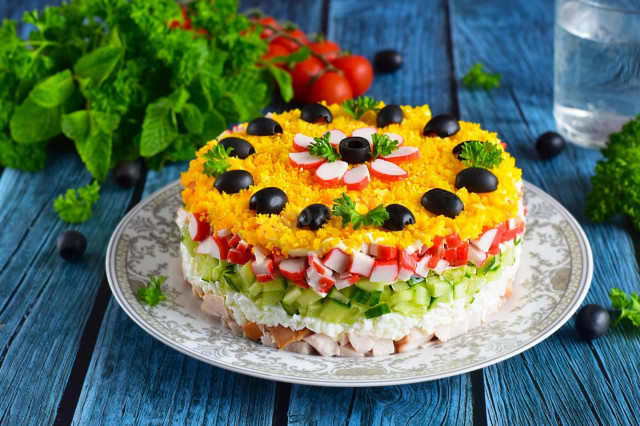Composition / ingredients
Step-by-step cooking
Step 1:
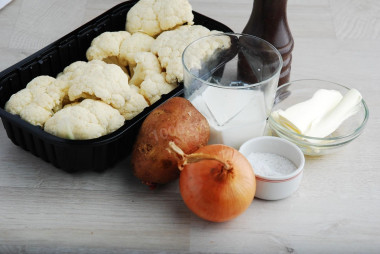
How to make cauliflower puree soup with cream? Prepare the ingredients specified in the recipe. I have 10% cream, but you can take any fat content.
Step 2:
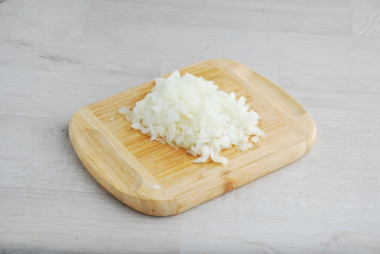
Peel a medium-sized onion, rinse with cold water and cut into small cubes.
Step 3:
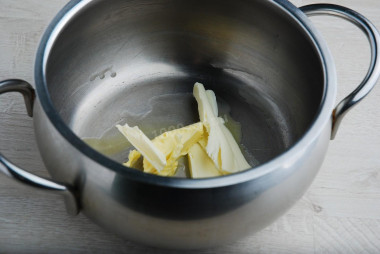
In a saucepan or saucepan with a thick bottom, melt the butter.
Step 4:
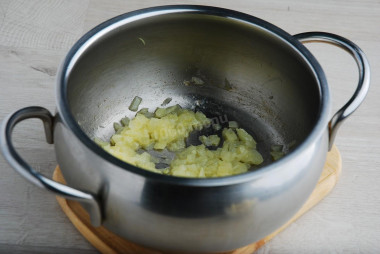
Put the chopped onion in a saucepan and fry it over medium heat until soft. Be sure to stir so that it does not burn.
Step 5:
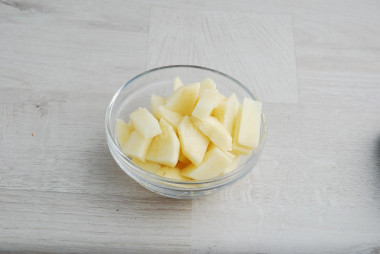
While the onion is frying, wash and peel the potatoes (I have one medium-sized potato). Cut it into small cubes, so it will cook faster.
Step 6:
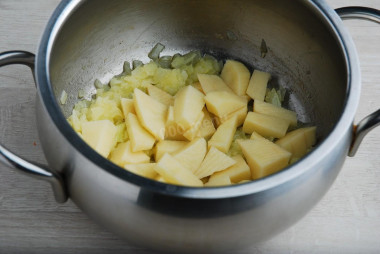
Add diced potatoes to the onion.
Step 7:
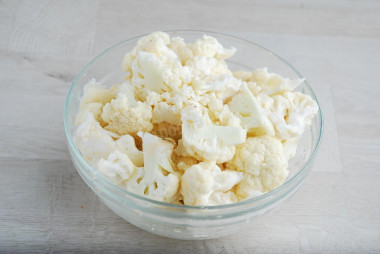
Rinse cauliflower under running water and cut into inflorescences.
Step 8:
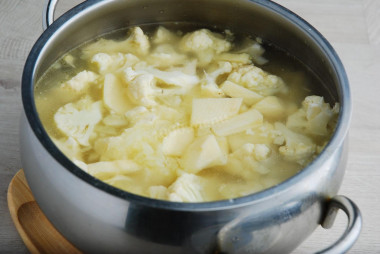
Put the cabbage in a saucepan with potatoes and onions. Pour in hot water so that it completely covers the vegetables. Be sure to use high-quality filtered water, as tap water will spoil the taste of the dish. Put the soup pot on medium heat and wait for it to boil. Reduce the heat to low and cook the soup for about 25 minutes. Cabbage and potatoes should become soft.
Step 9:
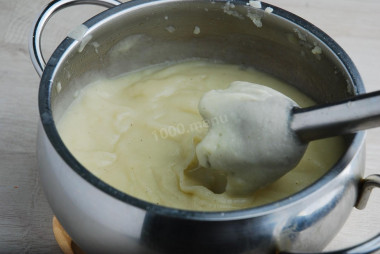
Pour the broth from the pan into a glass, drain the rest of the liquid. With an immersion blender, turn the vegetables into a homogeneous puree, gradually adding the broth until you get the desired consistency of the soup.
Step 10:
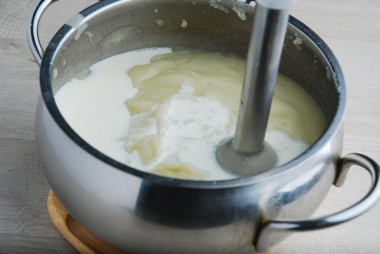
Pour in the cream and punch it again with a blender. Put the pot of soup on the fire and warm it over low heat for about 2 minutes, preventing boiling.
Step 11:
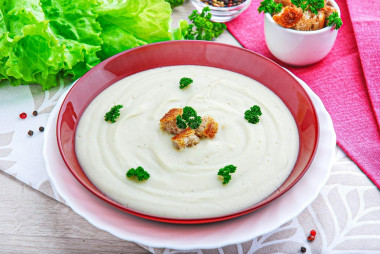
Pour the ready-made cauliflower puree soup with cream on plates, garnish with herbs, for example, parsley, dill or green onions. Serve the soup immediately until it has cooled down with wheat or rye crackers. Bon appetit!
The recipe for cauliflower puree soup with cream can be supplemented or changed. For example, you can add processed or hard cheese, other vegetables to taste, such as broccoli, zucchini.
If you don't want to, you don't have to add potatoes.
In addition to ground black pepper and salt, you can use suitable dry spices at your discretion.
Cream can be replaced with milk, sour cream or natural yogurt without additives.
Important! Regardless of whether the amount of water for soup is indicated in the recipe or not, it is best to focus on your own preferences (thick or more liquid soup you like), as well as on the size of your pan and the products taken for cooking. Do not forget that the author has his own view on the amount of meat, potatoes, cereals and other ingredients in the soup, which may not coincide with yours. In practice, this means that if you are cooking for the first time, you should not cook a whole pot at once. Make a soup for tasting - for one or two people. To do this, reduce the amount of all ingredients according to the recipe to 1-2 servings, and take the amount of water from the calculation: from one cup per serving - if the soup is very thick, to 1.5-2 cups - if more liquid. Do not forget to take into account that part of the liquid will boil off during the cooking process. After tasting a small portion of soup, you can adjust both the amount of liquid and the proportions of ingredients to your taste. In the future, like most experienced housewives, you will be able to pour water for soup and lay the ingredients “by eye".
Cream for this recipe can be of any fat content, but remember that the higher the percentage of fat content of the products you use, the higher the calorie content of the dish will be.
How to choose the perfect pot for soup, porridge or pickling cucumbers read the article about pots.
Caloric content of the products possible in the composition of the dish
- Ripe potatoes - 80 kcal/100g
- Baked potatoes - 70 kcal/100g
- Mashed potatoes - 380 kcal/100g
- Boiled potatoes - 82 kcal/100g
- Potatoes in uniform - 74 kcal/100g
- Fried potatoes - 192 kcal/100g
- Buttermilk - 36 kcal/100g
- Cream of 20% fat content - 300 kcal/100g
- Cream of 10% fat content - 120 kcal/100g
- Cream - 300 kcal/100g
- Cauliflower - 28 kcal/100g
- Ground black pepper - 255 kcal/100g
- Butter 82% - 734 kcal/100g
- Amateur unsalted butter - 709 kcal/100g
- Unsalted peasant butter - 661 kcal/100g
- Peasant salted butter - 652 kcal/100g
- Melted butter - 869 kcal/100g
- Salt - 0 kcal/100g
- Onion - 41 kcal/100g
